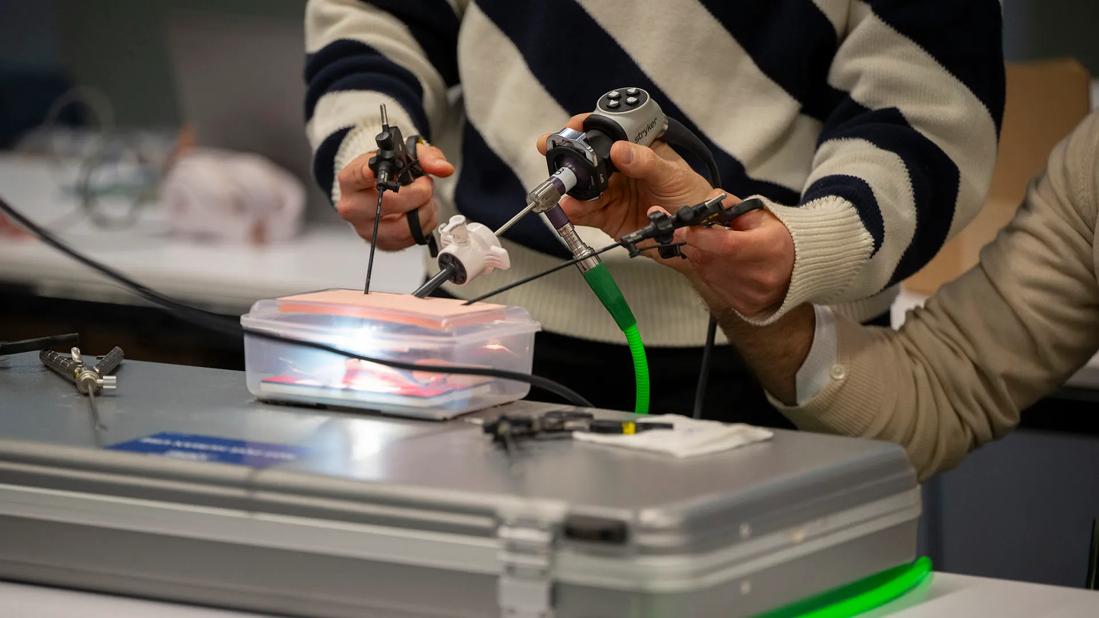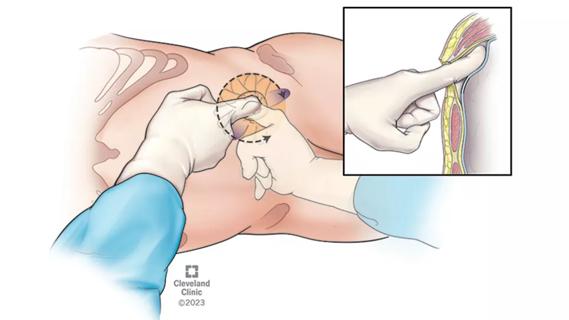Center touts the benefits of neonatal MIS, trains others on the approach

In the United States, only about 15% of neonatal surgeries are performed laparoscopically, despite this approach demonstrating better outcomes and fewer complications. To help address this gap, the 1st International Neonatal Minimally Invasive Surgical Symposium recently provided expert instruction and hands-on training to expand access to these advanced surgical techniques.
Advertisement
Cleveland Clinic is a non-profit academic medical center. Advertising on our site helps support our mission. We do not endorse non-Cleveland Clinic products or services. Policy
Hosted by Cleveland Clinic Children’s, this groundbreaking symposium was the first of its kind in the U.S., offering surgeons an invaluable opportunity to learn advanced laparoscopic techniques. Many of these surgeons might otherwise lack sufficient case exposure to gain meaningful experience, explains Miguel Guelfand, MD, Section Head for Pediatric General and Thoracic Surgery at Cleveland Clinic.
“The goal was to equip surgeons in the U.S. and internationally with the skills to bring this surgical approach back to their home institutions,” says Dr. Guelfand.
Held in November 2024, the symposium featured six renowned neonatal MIS experts, including Dr. Guelfand. The program included a one-day hands-on esophageal atresia workshop and a full day of lectures highlighting state-of-the-art techniques in neonatal surgery different pathologies.
The event sold out within weeks of its announcement, underscoring the high demand for this specialized training. Attendees included 40 surgeons from 14 countries and five U.S. states outside Ohio.
“Surgeons are eager to learn these techniques because minimally invasive surgery is a much better way to care for neonatal patients,” notes Dr. Guelfand.
Minimally invasive neonatal surgery offers numerous benefits over open surgery, including reduced pain, minimal blood loss, faster recovery times, and lower risks of complications. Although this approach is the standard of care in many countries, its adoption in the U.S. remains limited, primarily due to a lack of training opportunities.
Advertisement
“This type of surgery is technically demanding because of the incredibly small space in which we operate,” Dr. Guelfand explains. “The tips and tricks that come with experience are crucial. The idea for the symposium was to teach in two days what might take someone years to learn on their own.”
At Cleveland Clinic, nearly all neonatal surgeries are now performed using minimally invasive techniques. Dr. Guelfand envisions the institution becoming “a beacon for neonatal MIS” and a global hub for training surgeons in these advanced methods.
“I’m a firm believer that minimally invasive surgery is the best way to treat our patients,” he said. “Once you understand the advantages of this approach over open surgery, you feel a responsibility to teach others. If we can help even one surgeon transition from open surgery to minimally invasive techniques, it’s worth it.”
Advertisement
Advertisement

Quality improvement project addresses unplanned extubation

Least-invasive open-heart AVR option to date yielded rapid recovery in all cases

Specialized clinic provides comprehensive care for pediatric patients with a high-risk history

How one simple project changed the conversation about care and the patient-parental experience

First single-port renal vein transposition reduces recovery time and improves outcomes

Rare pregnancy complication can lead to fetal demise

Approach offers a ‘middle ground’ between radical prostatectomy and active surveillance

The low anterior access approach using the single-port robot is gaining attention within the field